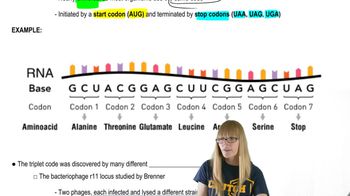The amino acid sequence of a portion of a polypeptide is
N...Cys-Pro-Ala-Met-Gly-His-Lys...C
Give the DNA template and coding strand sequences corresponding to the mRNA. Use the N, Pu, and Py symbols as placeholders.
 Verified step by step guidance
Verified step by step guidance Verified video answer for a similar problem:
Verified video answer for a similar problem:

